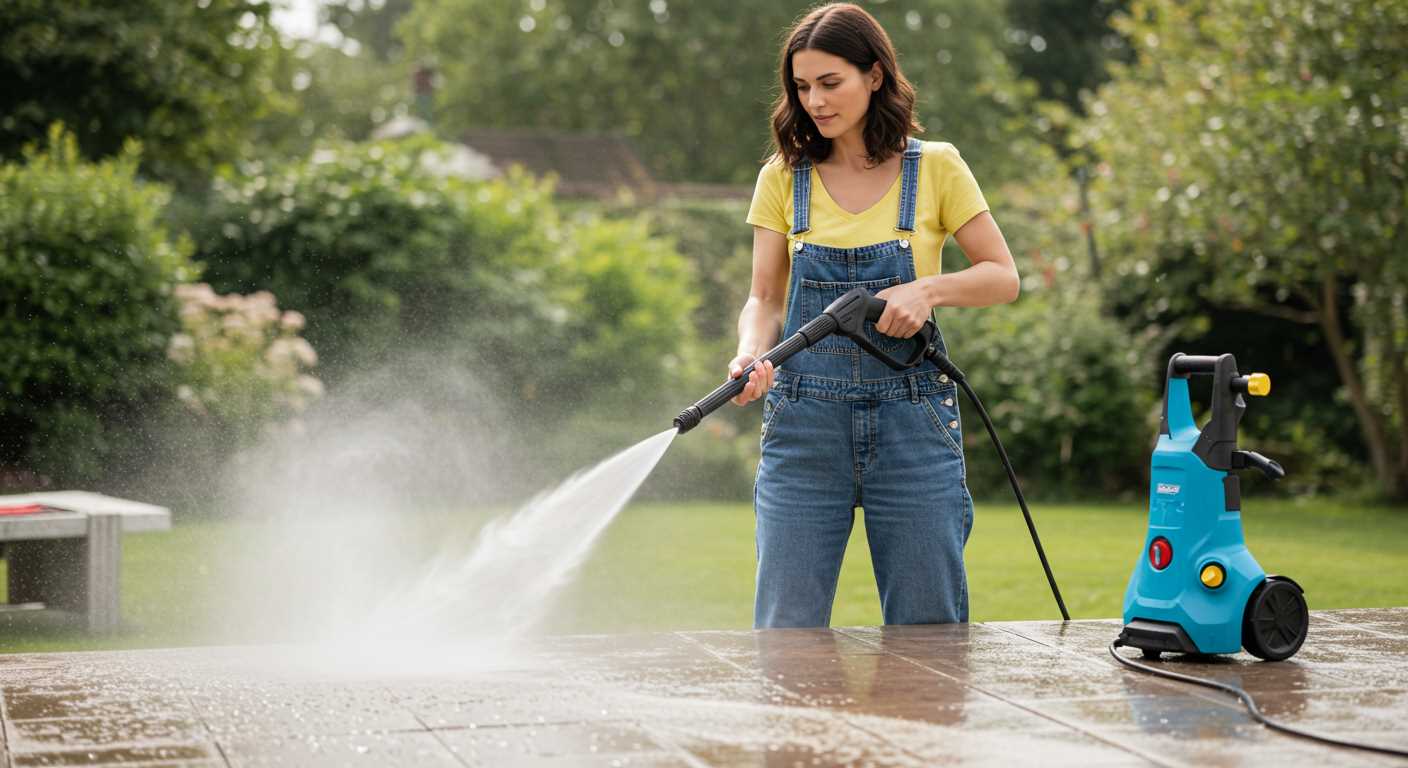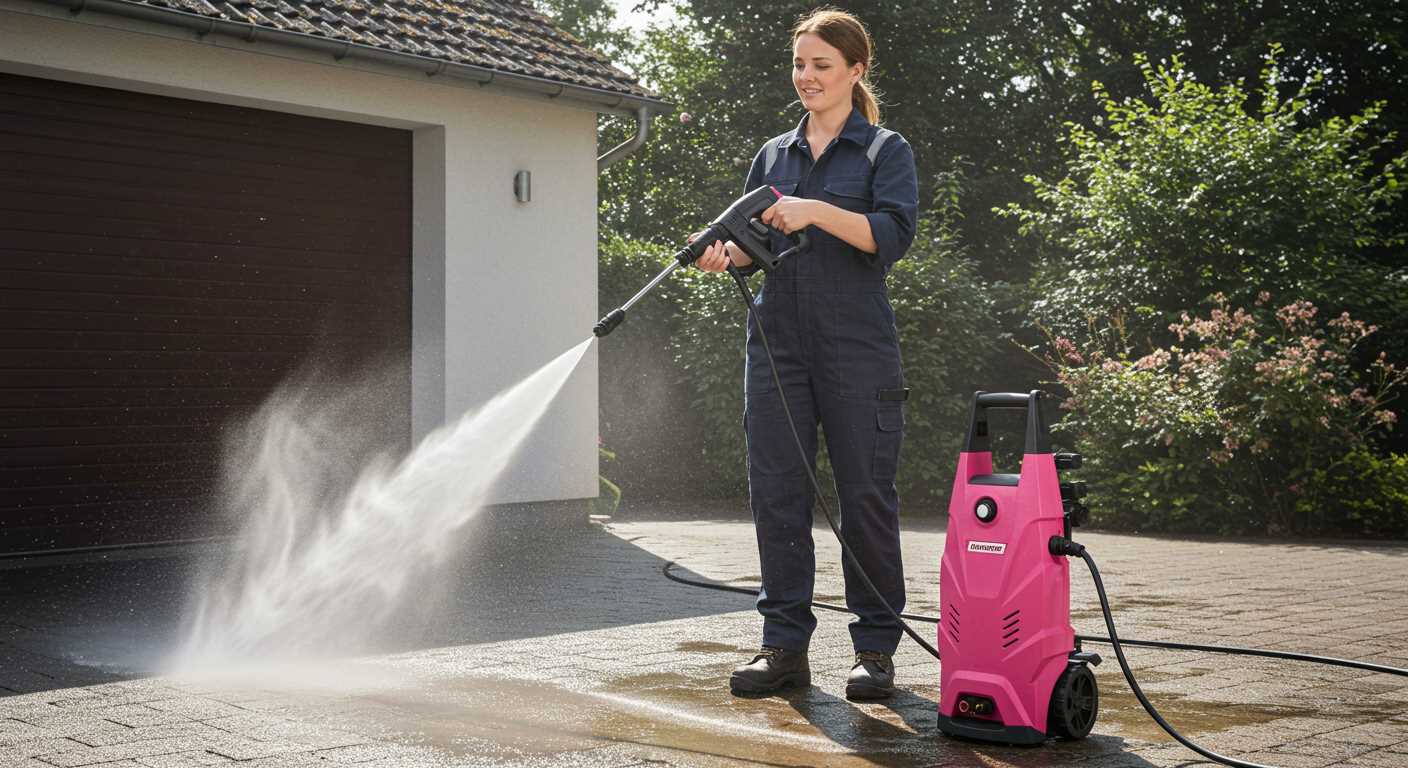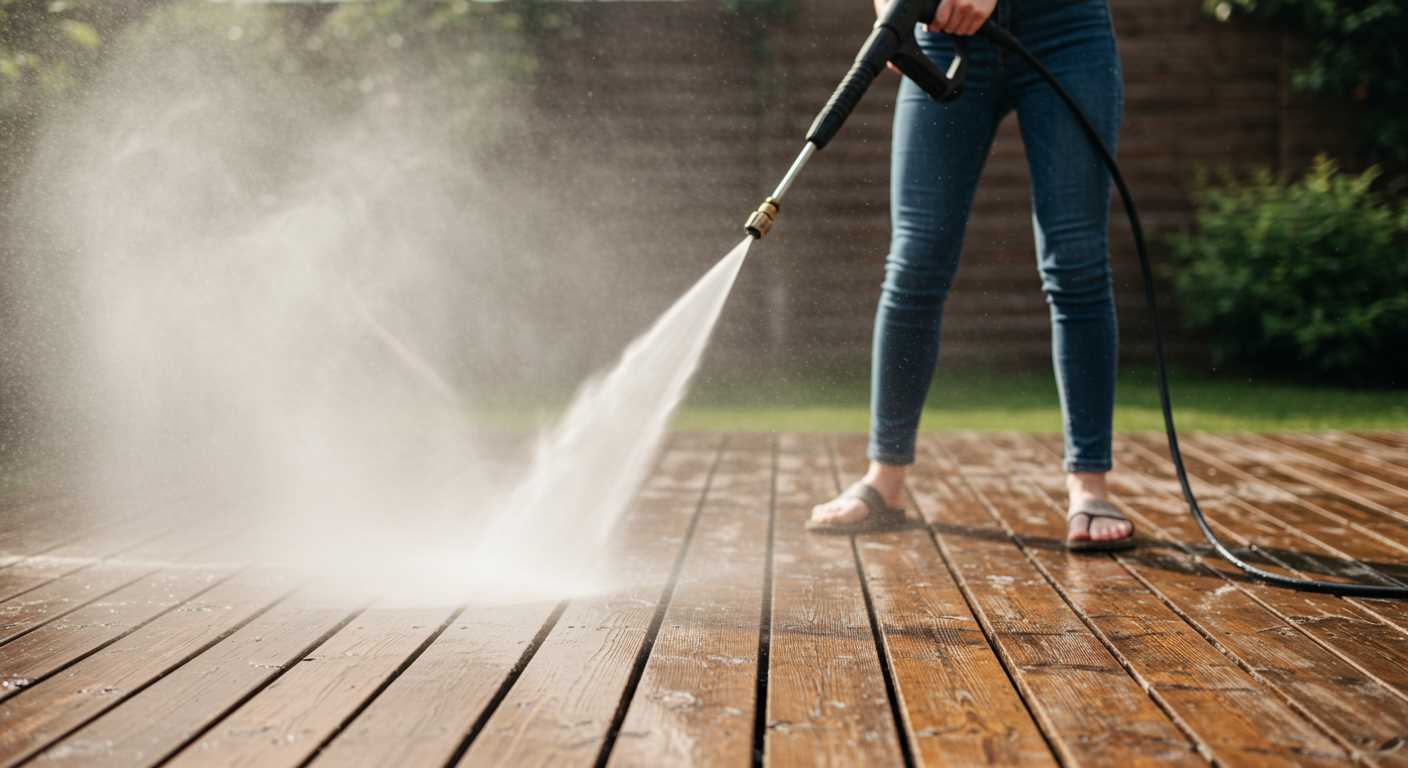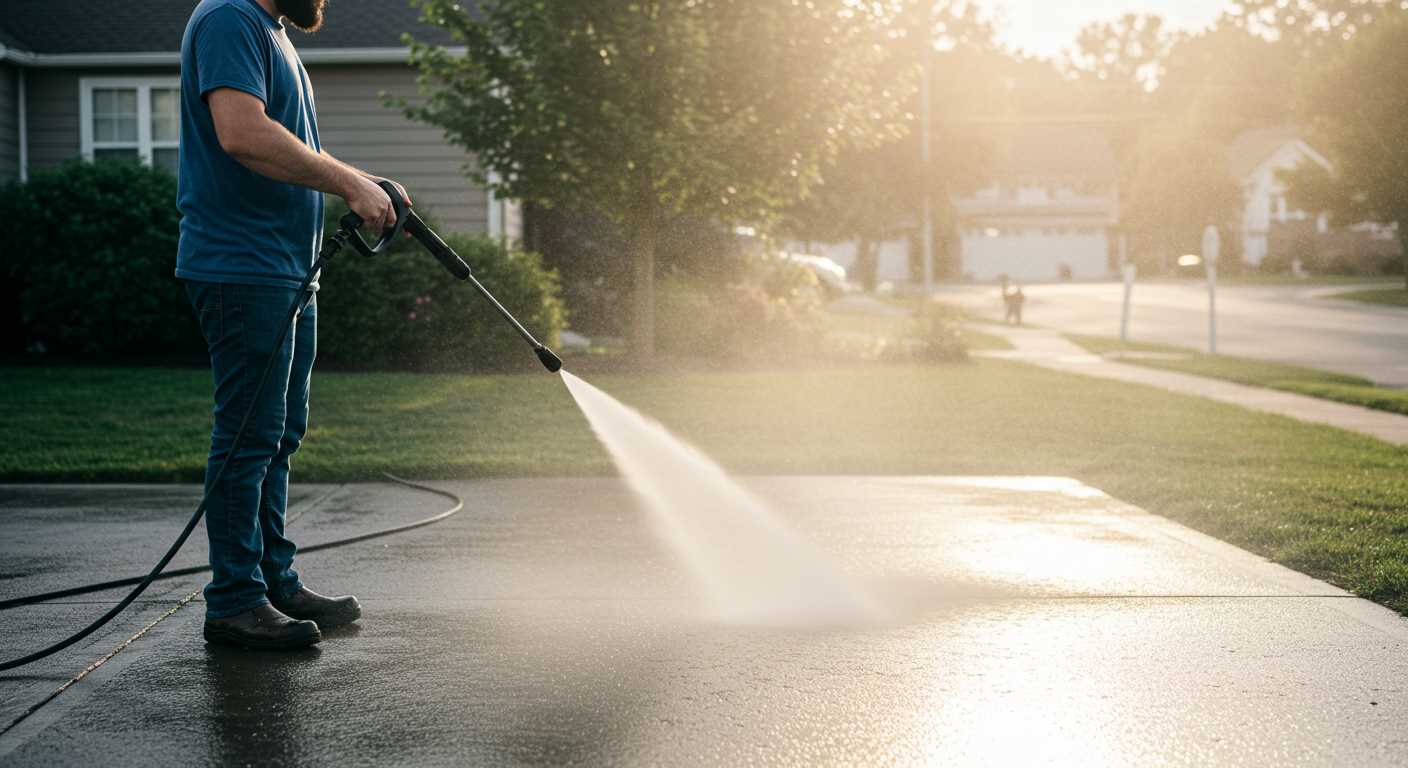



Using high-powered equipment can significantly improve the appearance of stone paving. The force generated by these machines effectively removes ingrained dirt, algae, and moss that often plague outdoor surfaces. However, the correct technique is crucial to ensure optimal results without damaging the stone.
For the best outcome, I recommend maintaining a distance of at least 30 cm from the surface. This distance prevents potential chipping or etching of softer stones. Additionally, using a fan spray nozzle rather than a concentrated jet can help distribute the water evenly, avoiding concentrated pressure that could harm the surface.
It’s essential to pre-treat particularly stubborn stains with a suitable cleaning solution before applying the forceful spray, as this can enhance the overall effectiveness. After cleaning, rinsing the area thoroughly is recommended to ensure all residues are washed away, leaving your paving looking refreshed and revitalised.
Choosing the right cleaning machine for slab maintenance
For optimal results on outdoor surfaces, I recommend selecting a model with at least 1500 to 2000 PSI. This pressure is generally sufficient to remove stains and embedded dirt without risking damage to the material beneath. Additionally, a flow rate of 1.5 to 2.5 GPM ensures thorough rinsing, which is vital for effective debris removal.
Consider the nozzle options
Look for a unit that offers interchangeable nozzles. A 25-degree or 40-degree nozzle is typically suitable for softer surfaces, while a turbo nozzle can provide more concentrated force for tough spots. These versatile options allow for adapting to various levels of filth on surfaces.
Check for user-friendly features
Consider models with features like adjustable pressure settings and on-board detergent tanks. The former allows you to regulate force based on the specific task, while the latter simplifies the application of cleaning solutions, ensuring a thorough job is easier to achieve.
Investing in a quality unit may save time and effort in the long run, making your outdoor space look presentable and well-maintained. Always verify the manufacturer’s guidelines on usage for the best results with your chosen equipment.
Understanding the Optimal Settings for Slab Maintenance

I recommend using a setting between 1500 and 2000 psi for effective maintenance of outdoor stone and concrete surfaces. This range provides sufficient force to dislodge dirt and grime without risking damage to the material.
Key Factors to Consider
- Surface Material: Different types of stone and concrete may require variations in pressure. Always start at the lower end and test a small area.
- Distance from the Surface: Maintain a distance of 12 to 18 inches to prevent etching or chipping, especially on porous materials.
- Cleaning Solution: Incorporating a suitable detergent can enhance results, allowing for lower pressure settings to be effective.
Adjustable Nozzle Settings
Utilising an adjustable nozzle enables versatility. A wide fan spray is ideal for vast areas, whereas a more concentrated stream can tackle stubborn spots.
Remember to adjust your technique with changing conditions; wet or greasy surfaces may require slightly higher pressure to achieve thorough cleanliness. Keep your equipment well-maintained, as a malfunctioning unit can alter pressure levels significantly.
Recommended Cleaning Solutions for Use with Pressure Washers
For optimal results, I recommend using specialized cleaning agents designed specifically for outdoor surfaces. These formulations can enhance the removal of dirt, grime, and algae, ensuring a thorough result. Look for products that are biodegradable and safe for use around plants and pets.
Top Products to Consider

| Product Name | Type | Best For |
|---|---|---|
| Krud Kutter | Multi-surface Cleaner | Effective against mildew and mould |
| Simple Green | Concentrated Cleaner | General grime and stains |
| RMR-86 | Mould & Mildew Remover | Specifically for organic growth |
| Cleansall | All-purpose Cleaner | Wide variety of surfaces |
| Mold Armor | Mould & Mildew Cleaner | Thorough cleaning of heavy stains |
Always follow the manufacturer’s instructions for dilution rates and application methods. For example, a commonly recommended ratio for concentrated cleaners is 1 part solution to 10 parts water. Using agents at recommended strengths prevents over-foaming and optimises the cleaning action.
Additional Tips

Before application, sweep away loose debris to prevent scratching the surface. Apply the solution and allow it some time to act on the stains before rinsing. In some cases, using a soap nozzle attachment can help to ensure even coverage of the cleaning mixture.
Test the solution on a small, inconspicuous area first. This ensures compatibility with your surface and prevents any adverse reactions. With the right agents, tackling stubborn dirt and grime can become much simpler and more efficient.
Techniques for Preventing Damage While Cleaning Slabs

Utilising a low-pressure setting is crucial to avoid surface damage. I typically recommend starting at around 1,200 PSI for delicate materials. It’s wise to test this pressure on a small, inconspicuous area first.
Angle and Distance
The angle of the nozzle and distance from the surface greatly influence outcomes. Maintain a distance of around 18 to 24 inches. Using a fan spray nozzle mitigates direct impact, spreading the force over a wider area, which reduces the risk of etching or chipping.
Technique and Movement
Adopt a sweeping motion rather than holding the nozzle in one spot. This allows for even distribution of pressure. Work in sections, moving from top to bottom, ensuring that there is no build-up of water in one area. Keep the nozzle parallel to the surface to further protect integrity.
Always inspect your equipment before use. Ensure that no attachments are damaged and that hoses are intact. Regular maintenance of the cleaning apparatus helps in achieving consistent performance and reduces the chances of mishaps.
Protect adjacent areas by using barriers or tape. This prevents overspray that may unintentionally affect surrounding materials, preserving their condition.
Consider environmental factors like temperature and wind. Cleaning in mild conditions helps to manage drying times, reducing the likelihood of streaks or other residues forming during the process.
By meticulously applying these techniques, I’ve avoided many common pitfalls associated with this type of cleaning and maximised the longevity of the surfaces attended to.
Frequency of Cleaning Surfaces Using a High-Pressure Appliance
The ideal interval for maintaining surfaces with a high-pressure device typically ranges from every six months to once a year. This timeframe ensures removal of dirt, mould, and algae, which can accumulate over time and compromise the appearance and durability of the material.
In areas with heavy foot traffic or proximity to gardens, more frequent maintenance may be necessary. For instance, pathways or patios subjected to frequent use may require treatment every three to four months. Regular assessments for signs of discolouration or grime build-up will guide your cleaning schedule effectively.
Seasonal Considerations
Adjusting your routine based on environmental factors is crucial. Post-winter is an ideal time for inspection, as melted snow and spring rains often uncover dirt layers. Late summer might also be beneficial, as it preps the surface for autumn and winter weather, reducing the risk of staining from fallen leaves and organic debris.
Monitoring Usage and Condition
It’s wise to evaluate the condition of the materials regularly. If you observe a noticeable change in appearance or texture, it may be time for treatment, irrespective of your usual schedule. Additionally, keeping track of local conditions–such as pollen counts in spring or heavy storms–can impact your cleaning frequency.
By developing a tailored approach based on usage and environmental factors, you can maintain the appearance and integrity of your surfaces effectively.
Comparing Cleaning Techniques for Hard Surfaces
When assessing various methods for maintaining hard surfaces, it’s clear that each approach has its own advantages and drawbacks. Traditional scrubbing requires significant manual labour and often doesn’t yield the same level of cleanliness as mechanical methods. Alternatively, chemical treatments can aid in removing stubborn stains but may leave residues that necessitate rinsing, adding an extra step to the process.
In my experience, a mechanical device offers a faster solution, particularly for large areas. The mechanical action not only saves time but can be tailored to different surface types and conditions. This flexibility is a major advantage over manual scrubbing. When comparing to using chemicals, mechanical cleaning reduces the need for potent solutions that might harm the surrounding environment.
Eco-Friendly Options
.jpg)
Unique eco-friendly alternatives are gaining popularity for their sustainability. Options such as steam cleaning offer a chemical-free approach, using high temperatures to lift grime. Though effective, it may not perform as well on heavily soiled surfaces. Conversely, using environmentally-safe detergents with a mechanical device provides a robust solution that minimises ecological impact while ensuring a thorough result.
Cost-Benefit Analysis
In terms of cost, investment in a mechanical device may seem daunting initially, yet the long-term benefits can outweigh the expense. With proper maintenance, these machines can last for years, saving on manual labour and chemical costs over time. Moreover, the efficiency they offer often reduces water usage compared to other methods, promoting conservation.
Ultimately, the choice of cleaning method hinges on the condition of the surface, the extent of staining, and personal preferences regarding effort and environmental impact. By considering these factors, one can select the most suitable approach to surface maintenance.








